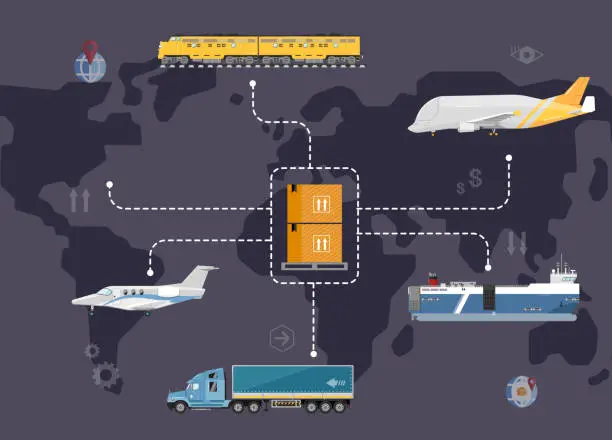
Exploring Transportation Modes: Diversifying the Journey of Goods and People
- Admin
In the intricate tapestry of global connectivity, transportation modes serve as the threads that weave together distant places, people, and economies. From the thundering wheels of freight trains to the graceful glide of airplanes, each mode of transportation offers unique benefits and challenges, shaping the movement of goods and people in our modern world. In this article, we embark on a journey to explore the diverse array of transportation modes, uncovering their characteristics, advantages, and contributions to the global transportation network.
1. Road Transportation:
Road transportation stands as the backbone of local and regional mobility, carrying goods and passengers along an extensive network of highways, streets, and byways. Trucks, vans, and automobiles dominate road transportation, offering flexibility, accessibility, and door-to-door service for both freight and personal travel. With the ability to reach remote areas and navigate urban environments, road transportation plays a crucial role in connecting communities, supporting commerce, and facilitating economic development.
2. Rail Transportation:
Rail transportation represents a hallmark of long-distance freight movement, carrying bulk cargo and commodities across vast distances with efficiency and reliability. Freight trains, powered by locomotives, transport raw materials, manufactured goods, and energy resources, leveraging rail networks that crisscross continents. Rail transportation offers cost-effective, energy-efficient solutions for transporting heavy goods overland, reducing carbon emissions and alleviating congestion on roadways.
3. Air Transportation:
Air transportation embodies the epitome of speed and connectivity, linking distant cities and continents with rapid transit times and global reach. Commercial airlines transport passengers and high-value cargo, such as electronics, perishables, and pharmaceuticals, via a network of airports and air routes. Air transportation offers unparalleled speed and convenience for time-sensitive shipments, supporting global trade, tourism, and business travel with efficiency and precision.
4. Maritime Transportation:
Maritime transportation reigns supreme as the backbone of international trade, carrying the majority of the world's goods across oceans and seas. Cargo ships, ranging from container vessels to bulk carriers, transport goods in massive quantities, traversing maritime routes that connect continents and ports worldwide. Maritime transportation offers cost-effective, energy-efficient solutions for transporting bulk cargo, raw materials, and consumer goods, supporting global supply chains and commerce on a monumental scale.
5. Pipeline Transportation:
Pipeline transportation silently flows beneath the surface, carrying liquid and gas commodities, such as crude oil, natural gas, and refined products, across vast distances with minimal environmental impact. Pipelines form intricate networks that span continents, delivering essential energy resources to refineries, distribution centers, and end consumers. Pipeline transportation offers safe, reliable solutions for transporting hazardous materials, reducing transportation costs and environmental risks associated with other modes of transportation.
Conclusion:
In the grand tapestry of transportation, each mode contributes its unique thread, weaving together the fabric of global connectivity and commerce. From the rugged terrain of roadways to the boundless expanse of the oceans, transportation modes offer diverse solutions for moving goods and people across distances and borders. As we navigate the complexities of modern transportation, let us embrace the diversity of transportation modes, leveraging their strengths and synergies to build a more connected, efficient, and sustainable world for generations to come.
